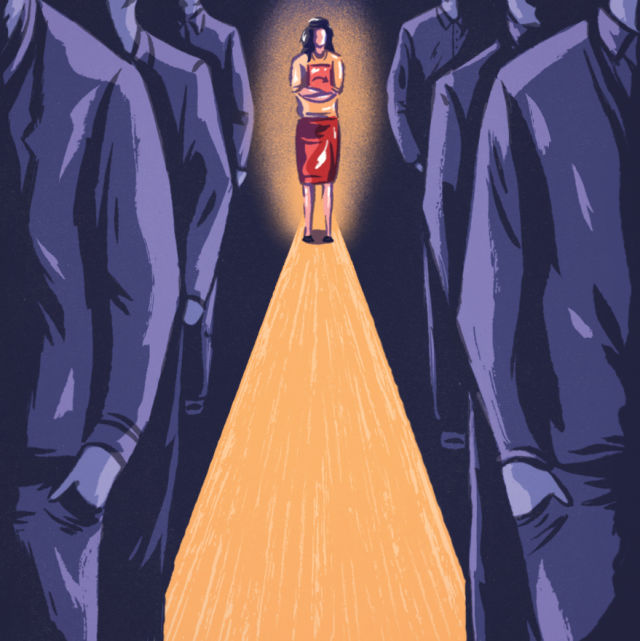Broverwhelmed: Gender Disparity in Seattle

When she arrived for her second interview at Amazon, the applicant was escorted to an undecorated office the size of a closet. There she sat as a procession of seven guys filed in one at a time to ask her questions, often the same questions as the guy before. Few made eye contact, none offered her so much as a drink of water or a bathroom break. The whole day she didn’t lay eyes on a woman. She was there for five hours.
Welcome to Dudeland.
She didn’t get an offer, but by the time she ran (screaming?) to her car she didn’t want one. Sure, Amazon’s got a rap for killing the bookstore, bullying publishers, swallowing Seattle block by city block. But what its stunning rate of growth is doing to increase the male-to-female ratio in this town feels like the real story, at least for a certain female job applicant. Not to mention single guys like Jeff Reifman.
The tech consultant couldn’t understand why it was starting to seem so hard to find a date. So he crunched census numbers and Amazon hiring guesstimates—they’re notoriously close mouthed—and blogged, in an infamous post in May, that, thanks to Amazon’s gender distribution (which payscale.com reports as 76 percent male), Seattle had “passed the tipping point” of gender imbalance. Reifman posited that by the end of this year the city of Seattle would have 130 single men, ages 25 to 44, for every 100 single women.
Sure, there are cities with more notorious man-heavy ratios; they don’t call it Man Jose for nothing. But last year King County ranked third in the country for male-lopsided population growth. What just a year earlier had been a majority of new female residents in King County reversed in 2013 to a majority of new males—a whopping 3,600 of them.
What do women think of the demographic shift? First surprise: Single women are not enthused. Those I spoke with described the classic odds-are-good-but-goods-are-odd phenomenon one hears about in other man-heavy places, like Alaska and, undoubtedly, frontier Seattle circa 1860. That’s when, in a strangely prescient bit of civic history, the 10-to-1 ratio of men to women inspired entrepreneur Asa Mercer to import Massachusetts women as brides—an experiment that fizzled after just two boatloads. (Presumably not because the lumberjacks were socially inept mansplaining tech geniuses.)
Frustration is likewise common among female tech professionals, one of whom, high-tech CEO Tarah Wheeler Van Vlack, disparaged the gender gap within the industry. “When a company tells you it’s 75 percent men—it’s usually not telling you how many of its women are in administrative and support positions,” she says, noting that the first woman hire in a tech startup is almost always the marketer. Just look on South Lake Union streets, she notes, and the men and women are very often separated by gender. “That’s not men and women avoiding each other,” she declares. “That’s high-prestige/low-prestige workers hanging with their own.”
This May, when Google bowed to pressure to release its diversity numbers, the company revealed that women amount to 30 percent of its worldwide employees and 17 percent of its technical staff. For Amazon and other techie women, the news was simply another day at the office. The fact is, women who enter the computer sciences famously leave it (a Harvard study found that 56 percent of female computer professionals leave the field midcareer), and few are in the pipeline (female computer science majors have plummeted since 1985).
The consequence for high-tech firms is an arrogant brogrammer culture that can make women feel undermentored at best, belittled and abused at worst. So here’s the surprise: It didn’t take long in any conversation with these professional women to get to the part where they confessed, almost guiltily, to the benefits. A female coder at a large SLU company who takes deep pride in “having made it in a man’s world.” A woman at a midsize Cap Hill tech company whose work as an engineer in an “overwhelmingly male” environment has provided so many “opportunities to stand out,” her “career is exploding.” A pioneer, VP of media at Razorfish and Fainting Room Records founder Megan Tweed, who says that women’s ownership of social skills not only opens up opportunities for them over their geek brethren—that technological savvy can flow from these social skills. “Women understand relationships, and tech’s about relationships too—between components.”
For her part, Van Vlack lights up like a modern-day Asa Mercer when riffing on the entrepreneurial potential the new numbers could bring her way: “I could launch a dating service!” Then she considers a benefit that goes beyond the personal and into the realm of the game changing.
“Larger tech companies aren’t thinking yet about the gender gap, but there’s a time limit on that lack of consciousness,” she notes. Workforce diversity, after all, isn’t a feel-good slogan; it tangibly strengthens companies by founding them on a multiplicity of viewpoints. Could Seattle’s male-dominated world become the match that ignites the overdue movement for equality—the movement to finally, meaningfully, lead women out of the interviewing closets and into the halls of high tech?
Van Vlack smiles. “I think we’re going to see that Seattle’s not a quiet place when it comes to the underdog.”




